The thing about small-displacement motorcycles, especially those in the quarter-litre class, is that some of them can be heaps of fun to ride. This is especially so if you’re a rider with a sporty outlook, and like pushing the limit, somewhat, on what a particular motorcycle is capable of.
When testing motorcycles with a lack of outright power, the rider is allowed to concentrate on other traits of the bike, in areas where barely a second thought might be given. One example is cornering speed, another is rider comfort, and even ergonomics.
One thing that Yamaha has been known for, since the days of the RD, and following that, the RD-LC and YPVS models, is how to put a whole lot of performance, and fun, in a small, 250 cc package. The latest iteration of Yamaha’s small sportsbike, the YZF-R25, assumes the mantle of the R5, and its racing sibling, the TR3.
With the basic building block of a parallel-twin, the YZF-R25 makes no bones about being a sportsbike, targeted to the young rider who is stepping up to their first ‘real’ bike. As the “baby” ‘R’ of the Yamaha sportbike range, the R25 does most things right, for a sportsbike.
Come along as we take the YZF-R25 through its paces on a test ride review, and find out what we liked about the 250 cc sportsbike, and what we didn’t.
Approaching the Yamaha YZF-R25, the first thing that strikes the eye is its handsome looks, drawing heavily on the design DNA of its bigger siblings, the R6 and R1. Most notably, the head-on look of the R25 resemble most strikingly the R6 of a generation ago.
The sharp, flat planes and folded angles of the fairing certainly give the R25 a very aggressive, sporty look that would appeal to the young man this bike is targetted for. Getting on the R25 drops you into a 780 mm-tall pocket, with the 14.3-litre fuel tank in front, and the tail-piece with its diminutive seatpad placing the rider into a very central position.
Starting up the YZF-R25 lights up the Christmas tree on the instrument panel, and the readout is divided into a large analogue tachometer on the left, and numeric speedometer on the right. All the basic information necessary for the rider is there, including an LCD-bar fuel gauge and temperature meter, and gear indicator.
Two tripmeters and an odometer complete the display, and fuel consumption calculator. We thought the instrument panel was a little lack-lustre and basic, until we noticed the little shift-light at the top of the cluster.
Starting off on the R25 is with a “snikt” into first on the very smooth gearbox. On the launch, the power delivery is controllable, and is definitely a plus for beginners.
Speaking of power, the YZF-R25’s engine, an EFI DOHC eight-valve four-stroke parallel-twin with liquid-cooling, pumps out a very appropriate claimed 36.5 hp at 12,000 rpm and 22.6 Nm at 10,000 rpm. If you’ve been paying attention thus far, those rpm figures should raise an eye-brow, or both, and for good reason.
Back in the 80s, Yamaha produced the four-cylinder Phaser, with a 250 cc engine that revved to a stratospheric – for a road bike – redline of 20,000 rpm. This was done to pull as much air and fuel into the engine as possible, in order to provide power figures that eclipsed the crop of quarter-liter bikes of that era.
With its 14,000 rpm redline – comparable to the current 15,000 rpm limit for current Formula 1 cars – means that the rider has to twist the throttle a long way, and without mercy, for the YZF-R25 to perform at, shall we say, interesting levels.
This means that the meat of the powerband lies in the upper reaches of the tachometer, something that will be familiar to readers who have taken a 250 cc two-stroke road bike for a good run. While keeping the tachometer needle below 7,000 rpm lets the R25 behave quite tractably, and suitable for dealing with urban traffic, a little prodding of the engine reveals that there is more meat to it than first appears.
Wringing the throttle out – and this is where we wished for a quarter-twist race throttle – brings the little 250 cc engine into the meat of the powerband, and the R25 wakes up. Not suddenly, no light-switch on-off power here, just a sudden urge and push forward as the engine pours on the steam and delivers.
And this is the key to riding the YZF-R25. Like its two-stroke ancestors, keeping the R25’s engine in the powerband makes the bike feel like it has a much bigger engine. Which it hasn’t. What the R25 needs is a balanced hand on the throttle, and the skill to keep the engine, and gearbox, in sync.
So, effectively, the R25 behaves like two bikes in one. Below 7,000 rpm, you have this tractable, easy-to-ride, daily commuter that is capable, if a little boring. Then you kick the engine in the nuts, bring the engine speed to about 8,000, and things happen fairly quickly.
While the YZF-R25 can be ridden by any rider, regardless of experience level, an experienced rider will have a lot of fun winding out the R25’s engine and rowing the gearbox lever. Getting the best out of the R25, like most every other 250 cc motorcycle, is corner speed and lean angle.
This is helped by the R25’s suspension. While the front is a non-adjustable OEM telescopic fork, we found the spring rate and compression to be well suited to our rider’s weight and riding style. Slow riding showed the bike absorbed the bumps and potholes of city riding well, and served its purpose on high-speed canyon strafing and highway riding.
The rear shock absorber, also an OEM unit, was adjustable only for pre-load. As tested, the standard setting worked for general riding duties, but rather more spirited, sharp-corner and leaned over riding would call for the spring to be wound up a little tighter.
Taking our usual test loop of canyons, country roads and highways, the R25 performed with no fuss. Carving the canyons revealed the steering to be sharp and precise. While the turn-in was a touch slow, once the corner entry was chosen, the R25 stayed there, with no hint of grumbling about being pushed hard.
Cruising home on the B-roads was interesting. Overtaking needs to be thought out carefully, as the response from the engine means there is a lag between when the rider calls for flank speed to when the engine room actually delivers. This means careful planning to account for the engine building up the revs, to executing the overtake.
Needless to say, the gearbox has to be in the correct gear for overtaking to proceed safely. A word about the gearbox. We’ve tested quite a few quarter-litre bikes over the past couple of months, and the Yamaha has the best performing six-speed ‘box, thus far. Gears were selected without a thought, ratios were correctly chosen for the engine performance and engagement was crisp and precise every time.
Right up till the point when our test rider wore race boots. This was when we found out the lever throw was a touch long, and required more movement of the left foot than when wearing normal riding boots. This meant missed shifts, lagged shifts and more false neutrals than we care to count.
This is, of course, a very special case. Most people would not wear race boots on a daily basis, or for that matter, wear race boots at all while riding the R25. Just a little something to account for if you ever want to ride the R25 in anger – think ahead, execute the shift decisively and don’t waffle around with half-hearted foot movements.
The YZF-R25’s riding position in general was quite accommodating. While the rider is put into the head-and-shoulders forward position of a sportsbike, it isn’t as extreme as, say, the KTM RC250 we tested. There is some place to move around, and the bars are placed in a position that doesn’t put the rider’s bum up in the air.
Good enough for highway cruising and general city riding duty, the R25’s engine characteristics does mean that the rider will have to put the bike in a state of high rpm on the highway. This translates into a slight buzz in the handlebars and pegs, and the cacophony of engine and wind noise will tire the rider out, eventually.
Although wide and race-like, the fairing – while looking quite handsome – doesn’t really do the job at very high highway speeds. Tucking in behind the windscreen shows a tiny bubble of still air for respite from the wind-blast, but riding the R25 at its maximum speed wouldn’t be something we would want to do every day.
The remedy for that? Slow down a little, find a comfortable position, and take a break often. The R25 is not designed as a long-distance, high-speed cruiser, and should not be treated as such. Instead, this is a young man’s machine, and is best suited for medium-speed corner heroics and impressing the young ladies.
Fuel consumption for the YZF-R25 was not all that impressive, although we managed 6.9-litres per 100 km, according to the trip computer. Just bear in mind this two-cylinder engine is carried in a sportsbike, revs to 13,000 rpm before the shift-light starts blinking and our tester did not spare the horses. 14,000 rpm sees the ECU cutting the power.
Braking on the YZF-R25 is handled by a 300 mm floating-disc grabbed by a two-piston calliper in front, and a 220 mm disc at the back. Pushing the R25’s front brake hard – and we are talking about racetrack level hard – showed the brake slowing the bike down, but not as fast as we would like, and we noted the lack of ABS.
Under normal riding, the brake was fine, and showed no signs of over-heating or fade, but spirited corner riding had us backing off a little after a long stretch of corners and hard braking. Again, under normal circumstances – and we emphasise the word ‘normal’ – the R25’s rider will never notice this, and the brake is more than adequate for city riding and highway speeds.
Just in case someone decides to ask about the rear brake. Our test rider only uses the rear brake for two things – touching the rear brake just before entering a corner to settle the suspension, and to hold the bike at traffic lights so he can straighten up and take his hands off the handlebars.
If you’re changing rear brake pads more often than the front, then you’re riding the bike wrong. This of course, exempts purposefully locking the rear wheel up for skids, stunts and the like, something Hong Leong Yamaha specifically warned us against doing when we took delivery of the YZF-R25.
Speaking of riding the 166 kg YZF-R25 hard, its diamond configuration frame was suitably stiff everywhere, and showed no signs of flex when pushed to the limit in corners and swift changes of direction. The R25’s quality of build was exemplary throughout, save the fact that the pillion seat pad was loose in its mounting.
We didn’t know if this was a production fault, or something that was peculiar to our test bike, since many had ridden it before us. We remarked on this to Yamaha when we returned the bike, and were promised the issue would be looked into.
Coming with twin-headlights separated by the air-intake runner in front, and LED tail-light, the R25 ticked the boxes for adequate lighting in typical riding conditions. Of note was the headlight beam throw at night, which was more than enough to light the way for fast highway night riding in confidence.
The 2016 Yamaha YZF-R25, which is mechanically unchanged from the 2015 model, retails for RM20,630, including GST, excluding road tax, insurance and number plates. The R25 comes in two colours – blue and matte grey. Rivals to the Yamaha YZF-R25 locally include the Kawasaki Ninja 250 which retails for approximately RM22,000 excluding GST and the KTM RC250, which goes for RM21,081 with GST.
So, who should buy the Yamaha YZF-R25? Being a small-displacement sportsbike, the first person that comes to mind is the young lad who is looking for a ‘proper’ first bike. The R25 certainly fulfils that requirement, with its twin-cylinder engine, and smart, sporty looks.
The lack of ABS is something we frown upon since the R25’s closest rival, the KTM RC250 comes with it standard, as the bike is intended for pretty much the young rider, but understand that in the interests of price-point marketing, some corners have to be cut.
Handling of the YZF-R25 is more than adequate, and for a young rider, will teach many lessons about corner speeds, entry and exits, while drumming in the lesson of throttle control and proper gear selection. As for the author, the R25 brought back a few memories about caning an RD350LC around the streets of Kuala Lumpur, decades ago, and the current Yamaha R25 would certainly find a place in his stable.
Looking to sell your car? Sell it with Carro.

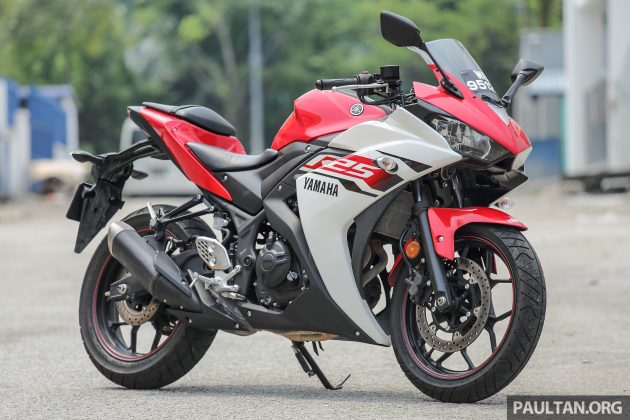
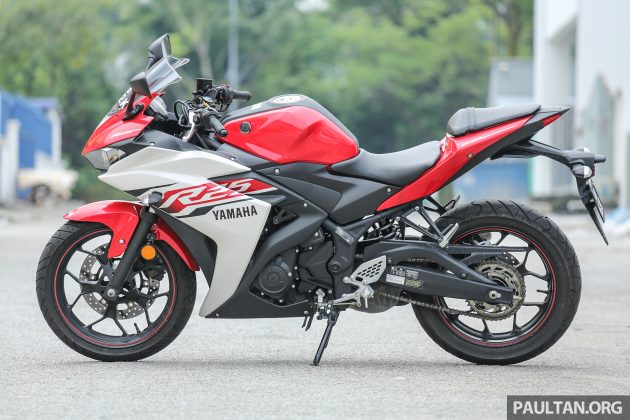
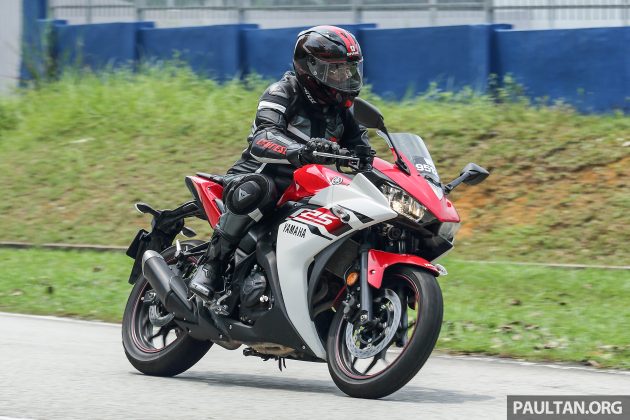


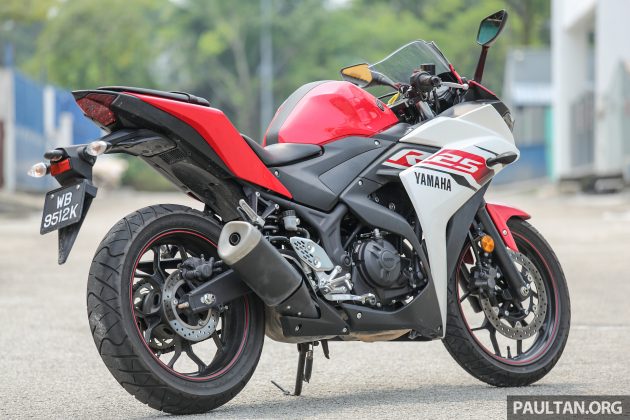



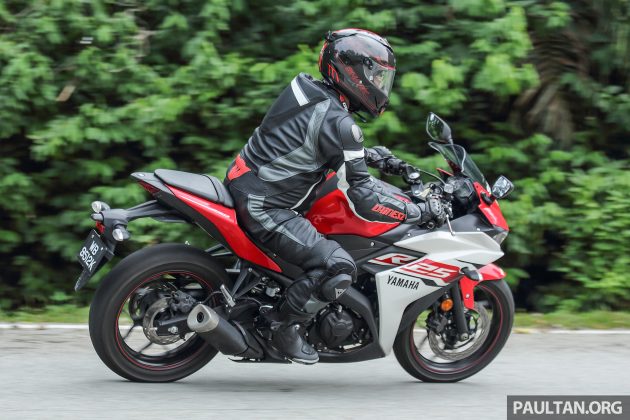



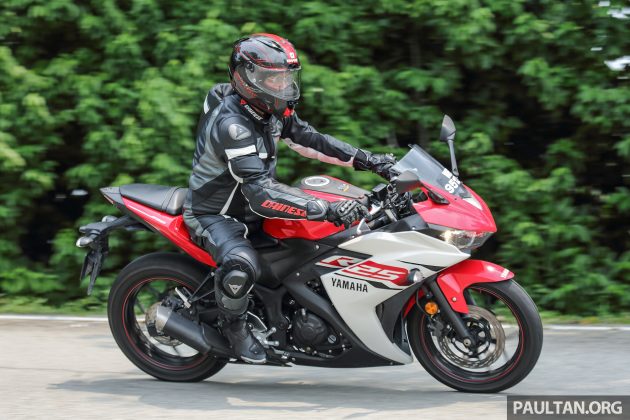
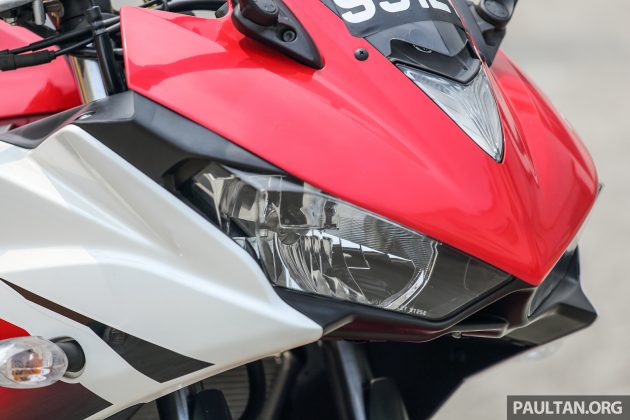




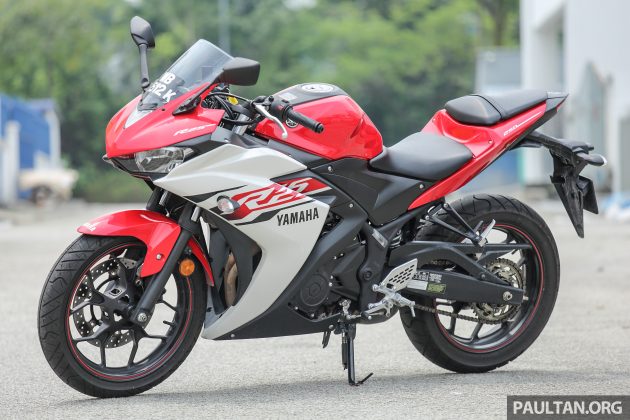
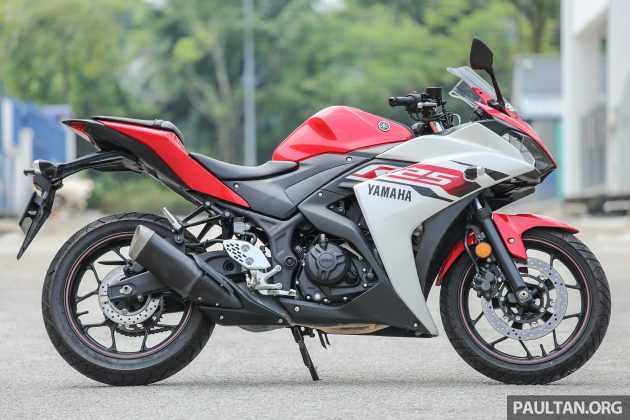
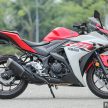
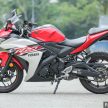
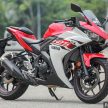
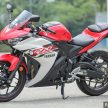
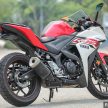
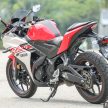
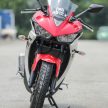

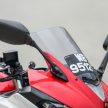
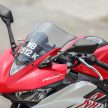

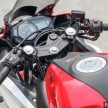
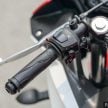
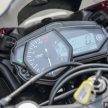
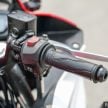
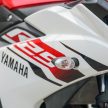
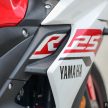
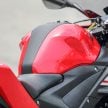
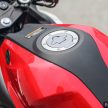
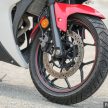
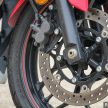
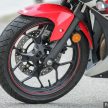
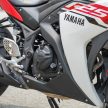
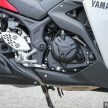
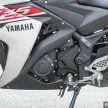
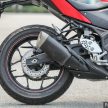
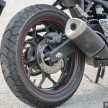
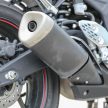
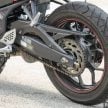
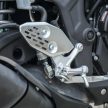
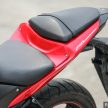
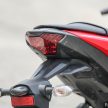
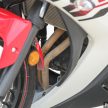













Ahh if only they brought the R3 instead.
Targeting B2 licence holders. Even KTM ..
change the R3 engine block and you will get the R3 performance without B full license.
A very interesting write-ups indeed..
When yamaha announced that they will have the ABS version, I was so excited…
then honda annouced their new CBR250r….
i am having orgasm. Huehuhuehue.
Great that you guys are getting into bikes! Hardly find proper reliable source in Malaysia on bikes. Could you do a review on the Yamaha MT-07? Please please please!
YES MT-07 please
First thing todo after bought this bike –> change the IRC Road Winner tire to something better. This tire just don’t want to grip at any condition.
Yes. That’s important. Yamaha’s stock tires are just suck. Easy to skid.
Why not try bridgestone?? Not sure whether they have for this bike.
If the fork is upside down, this will bring to another level.
I’m waiting for the beautiful 2016 honda cbr 250.
really good review and writing style, mr mohan.
I just bought the bike for few reasons, one its Yamaha. Second it’s best looking bike compared to other manufacturers three it’s still considered to be decently fast.
But after reading what you wrote here. I’m glad I got this for myself.
This bike can easily smoke out ninja 150rr..I already test it.
Ya.. It’s true. 150rr eat r25 smoke
Do you know how many times officially recall on this bike ?